
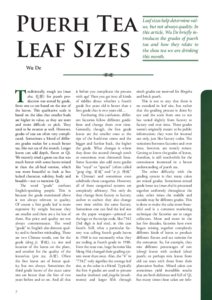 |
|
Traditionally, rough tea (mao cha, 毛茶) for puerh production was sorted by grade, from one to ten based on the size of the leaves. This qualitative scale is based on the idea that smaller buds are higher in value, as they are rarer and more difficult to pick. They tend to be sweeter as well. However, grades of teas are often very complicated. Sometimes a blend of different grades makes for a much better tea, like our tea of the month. Larger leaves can add depth, flavor or Qi. We recently tried a green tea that was much better with some leaves mixed in than the all-bud version, which was more beautiful to look at but lacked character, subtlety, body and breadth - not to mention Qi.
The word "grade" confuses English-speaking people. This is because the grade mentioned above is not always relevant to quality. Of course a first grade leaf is more expensive by weight because they are smaller and there are a lot less of them. But price and quality are not always commensurate. The word "grade" in English also denotes quality and is therefore misleading. There are two Chinese words, one for the grade (deng ji, 等級), i.e. size and location of the leaves on the plant, and another for the quality of the leaves/tea (pin tze, 品質). Often the first leaves are of better quality, but not always. Sometimes the third grade leaves of the exact same tree are better than the first of two years before and so on. And all that is before you complicate the process with age! Then you get into all kinds of riddles about whether a fourth grade five years old is better than a first grade that is two years old...
Furthering this confusion, different factories follow different guidelines and change them over time. Generally, though, the first grade leaves are the smaller ones at the tips of the bush/tree stems and the bigger and further back, the higher the grade. What changes is where they draw the second through tenth or sometimes even thirteenth lines. Some factories also add extra grades like "royal" or "special" (often called "gong ting, 宮廷" and "te ji, 特級" in Chinese) and sometimes even subdivide those categories. However, all of these categorical systems are completely arbitrary. Not only do they change from factory to factory, author to author; they also change over time within the same factory. Sometimes one can find the leaf size on the paper wrapper - printed on the logo or the recipe code, like 7542 (3rd digit is leaf size), in this case fourth. Still, what a particular factory was calling fourth grade leaves in 1960 is not necessarily what they are coding as fourth grade in 1980. Even the state run, large factories like Meng Hai changed their grading system more than once. Also, the "4" in "7542" only signifies the average leaf size, as the cakes is a blend. Typically the first 4 grades are used to process tuochas (melons) and jingcha (mushrooms) and larger fifth throughninth grades are reserved for Bingcha and brick puerh.
This is not to stay that there is no standard in leaf size, but rather that the grading process is done by eye and the scale from one to ten has varied slightly from factory to factory and over time. These grades weren't originally meant to be public information; they were for internal use only, just like factory codes. The variations between factories and over time, however, are mostly minor. Getting to know the grades of leaves, therefore, is still worthwhile for the connoisseur interested in a better understanding of puerh tea.
The other difficulty with the grading system is that many cakes are mixed grades. Sometimes mixed grade loose tea (mao cha) is processed together uniformly throughout the cake; other times the middle and outside may be different grades. This is done to make the cake more beautiful and is a common marketing technique the factories use to target collectors. More and more in the last few decades, factories have even begun mixing together completely different kinds of leaves to produce different flavors and tea varieties for the consumer. So, for example, they mix different percentages of raw (sheng) leaves with cooked (shou) puerh; or perhaps mix leaves from old tea trees with those from their plantation bushes. Mixed cakes can sometimes yield incredible results that are both delicious and full of Qi, but many times these cakes are inferior to the traditional ones. It is better to have a cake composed wholly of old tea tree/larger leaves than a mixed one which presents confusing aromas, flavors and/or energies, for example.
In general, old-growth forest trees will have larger leaves than plantation tea (tai di cha, 台地茶). This doesn't mean that leaf size is a sure sign of which is which, however. A bud from an old-growth tree may still be smaller than an older leaf from a plantation tree. How long the leaf is on the tree matters as well. Energetically, leaves cross a threshold after which they are no longer the giving of the tree, but rather the receiving of light. In other words, the leaves expand and eventually aren't an outward expression of the tree's nutrients, from the roots, and start absorbing light inwards instead. This is why the lower grades are usually better. But as I said, this isn't always true, because a higher grade could also signify old-growth mao cha. A good example of a vibrant tea with higher-grade leaves is the famous "8582" first blended in the eighties, in which the average leaf size is "8", which is rather large. 8582 was a throwback to Antique Era teas that were composed solely of old-growth mao cha. And the vintage versions of 8582 are amongst some of the best puerh ever made.
Below is a table with some photos of the average first through tenth grade leaf sizes:
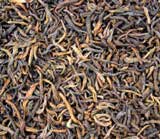

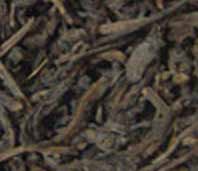
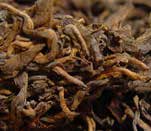
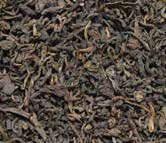
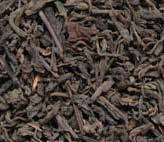
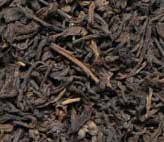

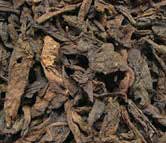
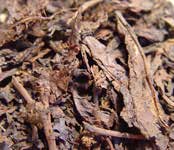
In general, old-growth forest trees will have larger leaves than plantation tea. This doesn't mean that leaf size is a sure sign of which is which, however. A bud from an old-growth tree may still be smaller than an older leaf from a plantation tree.